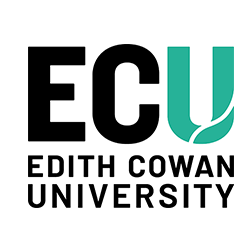Date of Award
2025
Document Type
Thesis - ECU Access Only
Publisher
Edith Cowan University
Degree Name
Doctor of Philosophy
School
School of Science
First Supervisor
Zora Singh
Second Supervisor
Andrew Woodward
Third Supervisor
Muhammad Sohail Mazhar
Fourth Supervisor
Kamaljit Kaur Sangha
Abstract
Jackfruit (Artocarpus heterophyllus Lam.) is a minor tropical tree that bears the largest edible fruit in the world with high nutritive potential. As jackfruit is an unexploited fruit, there is a lack of systematic research on: fruit maturation and ripening assessment, fruit quality evaluation, and postharvest quality management of jackfruit. This research project: evaluates changes in fruit quality during maturation and ripening; examines variability in fruit quality traits and mineral composition among different jackfruit genotypes; and investigates the effects of postharvest dip application (five min) of methyl jasmonate (MeJA), putrescine (PUT) and melatonin (MLT) on fruit quality and storage life of jackfruit bulbs.
With progression of fruit maturation and ripening, a significant increase in jackfruit soluble solids content (SSC), ascorbic acid (AsA), and total flavonoids content (TFC) was observed. However, total phenolics content (TPC), and titratable acidity (TA) exhibited a decline with progression of maturity and ripening. With the advancement of fruit maturity and ripening, there was a decline in bulb firmness, total pectin (TP), protopectin (PP), and cellulose (CEL) along with increase in activities of fruit softening enzymes.
Amongst the investigated jackfruit genotypes, maximum fruit and pulp weight were recorded in ‘Accession 304’, whilst ‘Accession 348’ exhibited the highest edible portion. The highest SSC:TA ratio was recorded in ‘Seedling 2’, where AsA and TCC were comparatively higher in orange-fleshed genotypes. ‘Accession 306’ exhibited the highest TPC, while TFC and dry matter content were higher in ‘Rajang’. Amongst 25 mineral elements, potassium, magnesium, and phosphorus were identified as primary minerals in jackfruit pulp. Among genotypes tested, ‘Seedling 1’, ‘Rajang’, and ‘Accession 284’ were superior in terms of average mineral content.
Postharvest application of 1.0mM MeJA to jackfruit bulbs significantly reduced disease incidence (DI) and maintained higher antioxidant potential as compared to untreated bulbs. Bulbs treated with 0.5mM MeJA exhibited significantly higher bulb firmness, along with lower activities of cell wall hydrolases, and higher TP than control bulbs. Bulbs dipped in 1.0mM MeJA had significantly higher PP, CEL and lower oxidative stress than control bulbs.
Exogenous application of PUT (0.5mM) was effective in reducing DI, and maintaining higher levels of antioxidants involved in the ascorbate-glutathione cycle. Oxidative stress was effectively mitigated in 0.5mM PUT-treated bulbs as evidenced by lower lipoxygenase, malondialdehyde and hydrogen peroxide radicals than control bulbs.
Postharvest application of 0.1mM MLT was most effective in alleviating browning index and suppressing the activities of browning enzymes. Treatment with MLT (0.2mM) maintained higher AsA, TPC, TCC and higher activities of antioxidant enzymes, as compared to control. Bulbs treated with 0.2mM MLT had relatively higher bulb firmness and TP, along with lower activities of cell wall hydrolases.
Overall, this study can guide the selection of genotypes based on intended use and marketability in addition to providing potential strategies to mitigate postharvest issues in jackfruit bulbs, thus contributing towards efforts to expand the commercial potential of jackfruit in Australia. These findings also provide a strong baseline for future research on genotype selection, maturity standardisation and postharvest quality management of whole jackfruit.
Access Note
Access to this thesis is embargoed until 18th April 2030
DOI
10.25958/fm53-8493
Recommended Citation
Kaur, J. (2025). Maturity determination and postharvest quality management of jackfruit (Artocarpus heterophyllus Lam.). Edith Cowan University. https://doi.org/10.25958/fm53-8493

